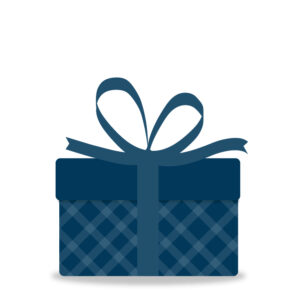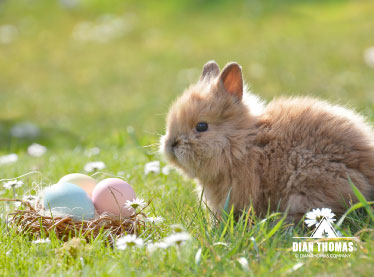In just a few weeks we will all celebrate Easter. Easter Sunday is the Christian festival honoring Christ’s resurrection and is considered by many people the world over to be the most important religious observance. It is a day of rejoicing for all Christian faiths. This is a fun time to look back and see how some of the Easter celebration came about.
The word Easter first came into use in A.D. 735. Eostre, or Eastre, was the Teutonic goddess, the deity of both the dawn and spring. The word was transferred to the holiday we now celebrate when the Saxons began to commemorate Christ’s resurrection. Easter falls on the first Sunday following the first full moon after the spring equinox.
Constantine the Great ordered the court to wear their finest garments on Easter, which may have been the beginnings of the Easter parade. Even today, it is customary to have a new outfit and bonnet to wear to church on Easter Sunday.
New clothes, Easter bunnies, chicks, lilies, and other Easter trappings are all symbols of the real meaning of Easter, the resurrection and life everlasting. A sunrise service, frequently held out-of-doors, is the highlight of the year in many churches.
Eggs are associated with Easter and are symbols of the resurrection. Eggs hold the seeds of life and represent fertility. Coloring eggs goes back to ancient times when eggs were dyed for spring festivals. Eggs in medieval times were dyed red in memory of the blood that Christ shed. In many European countries, egg decorating is a fine art, especially in Russia and the Ukraine. Several days are spent decorating just one egg.
Folklore has it that an Easter egg with two yolks is a sign of coming financial prosperity, and refusing the gift of an Easter egg endangers your friendship with the giver. In China today, a brilliant red egg is sent as a sign of happiness to friends and relatives when a child is born.
The Easter rabbit tradition originated in Germany. Since rabbits are so prolific, they are said to be symbols of fertility. Tales were told that the Easter bunny laid the eggs for which the children searched in the grass.
Along with the new clothes and fun Easter crafts, it would be nice to share with your family the deep meaning of the holiday so they understand why it matters so much.
Special Easter Egg Hunt
One of my favorite traditions in our family is an Easter egg hunt. Easter eggs are symbolic of the rebirth of new life in spring and Christ’s resurrection. Assign each child a color. Buy plastic eggs or color hard-cooked eggs in an equal number of each color. Fill plastic eggs with candy or small toys. Hide the eggs according to the age and ability of the child.
If you have several children coming to the egg hunt, a time-saving tip and a fun idea is to have the older children hide eggs for the younger children. Eggs for very young children can be hidden so that they can be seen, but eggs for older children can be hidden in more challenging locations. Give each child an empty basket with a ribbon of the appropriate color tied to the handle.
Make it an extra fun Easter Treasure Hunt by including messages. You can put a clue inside a plastic egg, write it on the outside of the egg with a fine-tipped marker, or hollow the egg shell and insert a rolled message. Place the egg containing the first message in the child’s Easter basket.



